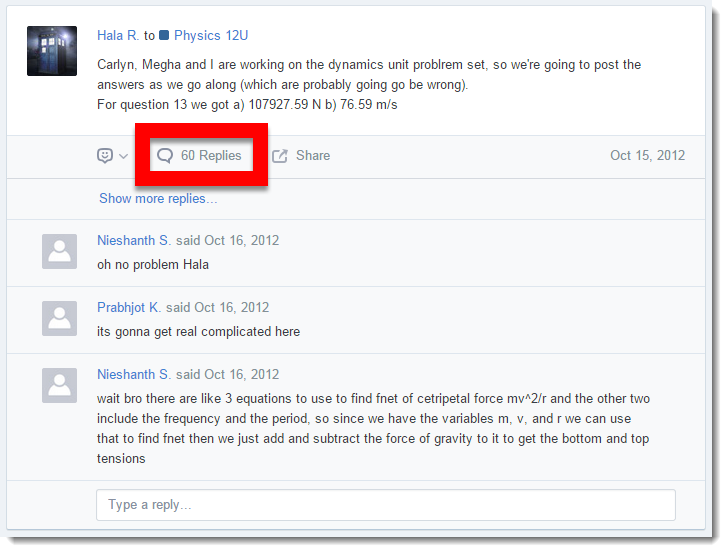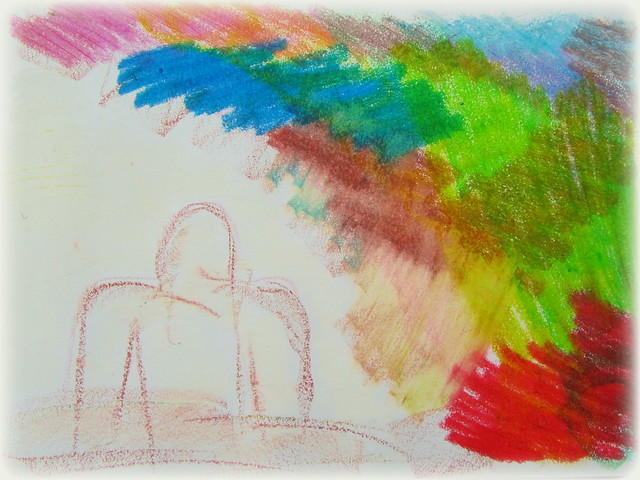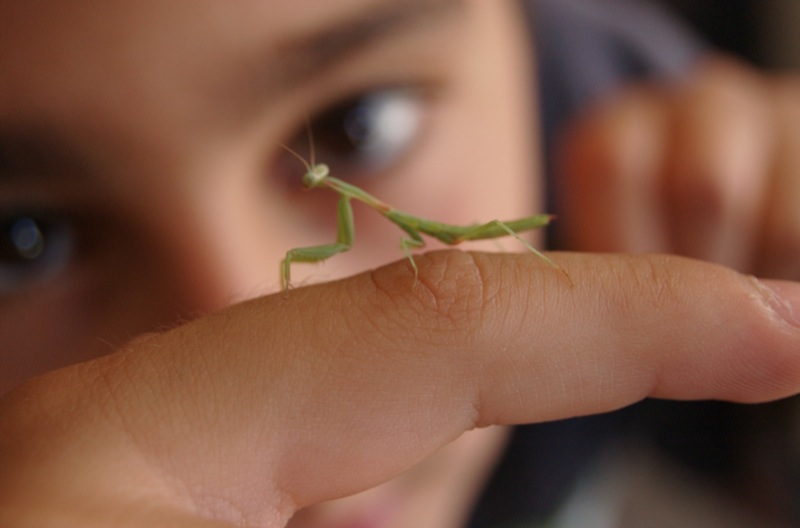What Does Innovation Look Like In My Classroom?
This post is part of a #JASSLearns community “blog hop” in which participants respond to the question, “What does innovation look like in my classroom?” After reading this post, be sure to click the links to others’ posts, and make your way through all of the contributors.
What does innovation look like in my classroom?
There are two ways that I can see to answer this questions: Focusing on students as innovators, or focusing on the teacher (me) as an innovator. As I learn more about Inquiry, Design Thinking and Project Based Learning, I am doing more to empower students as innovators. However, I acknowledge that I am still very early in the journey, so I can’t really say that I have done much in the way of helping my students innovate. By contrast, I feel that as a teacher I have used my classroom as a “professional innovation playground” since I started teaching.
For me, innovation is about making something new or better. I have always appreciated that one of the best things about the teaching profession is the opportunity to redo and refresh multiple times a year. With every new group of students, we are given a fresh start — a chance to learn from the previous semester and to make it better!
Thinking about innovation in my classroom, I decided to make a sketch to visualize it.
The way I see it, there are 4 main stages:
- New idea or insight (which often comes while listening to a podcast, discussing with a colleague, or just reflecting on how I want students to grow), leading up to overly excited launch of a lesson or project.
- Major implementation dip — Nothing ever goes as planned, and I have come to expect that the roll out will always fall short of my expectations. While others might call the experiment a fail, I hold steadfast to the vision and try to derive as much learning from the experience as I can so as to improve for the next semester.
- Iteration — Over the next few semesters, I reflect and refine the idea. Although the innovations are smaller, they add up to a lot. Over time, the lesson or project has morphed into something better and more robust that I had originally thought.
- Mastery (and to some degree, boredom) — After a while, what was once innovative seems normal to me, and as the semesters go by, I change and grow as an educator. Eventually, I find myself putting an old innovation on the back burner, and investing in a new and exciting project.
So, that’s how I see innovation working for me. Innovation is a journey defined by a cycle of “Try, Learn, Repeat.”
Now, pick a blog to jump to next. Happy hopping!
Digital Learning with Math
This post is part of a #Peel21st community “blog hop” in which participants share a digital learning experience in math. After reading this post, be sure to click the links to others’ posts at the bottom of the page, and make your way through all of the contributors.
I am a high school physics teacher and physics naturally has a lot of math in it. So, I decided I would post about a teaching experience I had a few years back and what it taught me about “21st century students.”
For a long time I have utilized some form of online social networking space in my classes (wikis, blogs, Ning, Elgg, Edmodo, etc.). I have found that providing an avenue for student voice online has contributed greatly to the sense of community that is built within my classes. Moreover, I have learned a great deal about my students and about physics from what and how my students share with the class. I highly recommend it!
Back in 2012, I was using Edmodo because it was easy to use and was one of the few platforms that had a mobile app (something that I think is very important if you want students to use the service). My students and I regularly shared ideas about physics, and links to YouTube videos that were either useful for learning physics, or demonstrated the amazing applications of physics. After providing my students with some additional practice questions in class, I logged in to see this:

Followed the next day by this:
Here is what stuck out most to me:
- These posts collectively had 165 replies, and most of the replies were substantial contributions.
- The initial posts were not a call for help, but an offer of service.
- These students were engaged in discussing mathematical problems on a Monday, Tuesday, and Wednesday evening.
Compare this with my students in years previous, who were likely sitting at home, working alone on problems, and probably getting frustrated and giving up. These days, even if the teacher does not provide an online space for collaboration, students will often create their own because they know how much better they can learn when the connect with others.
Ultimately, the key take-away for me was that students want to learn together, and that digital learning spaces can really help to facilitate that sharing. Even when learning a subject that is as abstract as math, online spaces permit students to discuss concepts, share what they are learning, and ask for help. Blended learning environments are becoming essential for digital learners in the 21st century.
Pick a blog to jump to next. Happy hopping!
Learning in the 21st Century
This post is part of a #Peel21st community “blog hop” in which participants share their thinking on what learning in the 21st century means to them. After reading this post, be sure to click the links to others’ posts at the bottom of the page, and make your way through all of the contributors.

Learning in the 21st century has one important focal point for me: Learning is (now, more than ever before) a lifelong endeavour.
Alvin Toffler is often quoted as stating, “the illiterate of the 21st century will not be those who cannot read and write, but those who cannot learn, unlearn, and relearn.” Although this is technically an adaptation from something that Toffler quoted from Herbert Gerjuoy (noted here), the phrase is nonetheless quite powerful. Given the rapid rate of change in our modern world, learning in the 21st century is, then, the process of learning how to learn, adapt to new paradigms, shift our thinking, and adjust to unforeseen challenges.
Although I feel like there are a thousand more things I want to say to expand and articulate my vision, part of this blog hop challenge was to be brief, so I will leave it there for now.
Image Credit: ConnectIrmeli
Pick a blog to jump to next! Happy hopping!
- Jim Cash – http://makelearn.org/
- Susan Campo – http://susancampo.ca
- Shivonne Lewis-Young – http://slewisyoung.wordpress.com
- Greg, Pearson – http://leaderinadigitalworld.blogspot.ca
- Phil Young – http://sphillipyoung.wordpress.com
- James Nunes – http://joyousteaching.blogspot.ca
- Donald, Campbell – http://ateachingyear.wordpress.com
- Ken Dewar – https://mysite.peelschools.org/personal/P0031112/Blog/default.aspx
- Graham Whisen – https://ideaconnect.edublogs.org/
- Heather Lye – http://teachinginspirations.blogspot.ca/
- Lynn Filliter – http://assessmentgeek.edublogs.org
- Debbie Axiak – http://debbieaxiak.blogspot.ca
- Alicia Quennell – http://aliciaquennell.blogspot.ca/
- Jonathan So – http://www.Mrsoclassroom.blogspot.ca
- Jim Blackwood – http://jimmyblackwood.wordpress.com
- Jason Richea – http://beyondangrybirds.blogspot.ca/
- Tina Zita – http://misszita.wordpress.com
- Sean Broda – http://mrseanbroda.blogspot.ca/
- Josh Crozier – http://joshcrozieredu.wordpress.com/
- Engy Boutros – http://engyboutros.wordpress.com/
StopMo – #Peel21st Blog Hop
This post is part of a “blog hop” and I am excited about the opportunity to participate. In this case, a group of educators have decided to post a blog on the same topic at the same time. This is my first time participating in this type of thing, but I like how it builds a stronger community among bloggers, and I look forward to learning from the other participants. The focus of this group blogging effort is to explore a educational tech tool. I have decided to write about an app for creating stop motion videos. Be sure to link off to the other blog posts at the bottom of this one.
 Stop motion has always been something that has captivated me. I think that my fascination with this form of animation comes from the ability to make impossible motion seem real, because of the careful planning and effort that creators put into their creations, and because it can be just plain fun to watch.
Stop motion has always been something that has captivated me. I think that my fascination with this form of animation comes from the ability to make impossible motion seem real, because of the careful planning and effort that creators put into their creations, and because it can be just plain fun to watch.
A year ago, a colleague of mine introduced me to the NFB StopMo app, and I immediately saw the value of this tool (and others like it) for education. As a Science teacher, I am always trying to assess how well my students truly understand some very difficult concepts. It is one thing for students to be able to recite definitions and equations for certain concepts, but you have to be much more innovative to determine how deep their understanding really goes. Stop motion is a great way to have students really engage with difficult concepts, and communicate their understanding in a visual way. Even more than an assessment tool, creating stop motion videos provides a platform for students to work collaboratively and co-construct an understanding of concepts together. In one of my favourite examples, I worked with a teacher who gave her grade 10 science students a simple task: produce a stop motion animation of mitosis — use whatever resources you need to understand the process, and whatever materials you want to visualize the process in your animation. Looking back, I wish I had kept some of the videos, but the results were amazing, and the class was fully engaged for 90 minutes straight. It was also clear that the students had a thorough understanding of the stages in this important process.
Apps like the NFB StopMo lower the barrier to creative output (something I have blogged about before). For those of us who lack traditional skills for creative output (fine art, music, drama), these apps provide one avenue for creating content that can actually be very good. More importantly, with access to an iPad, students and teachers can now create high quality productions that would have been impossible (or extremely expensive) even 10 years ago!
I have used other stop motion apps in the past, but for the purpose of this blog hop, I decided to sit down and tinker with the NFB StopMo app. I found that the learning curve was incredibly small and the interface was very easy to navigate. This app costs $2.99, but it is completely worth it! In only 15 minutes of playing, I was able to produce this masterpiece:
If that video doesn’t inspire you, I don’t know what will!!
Check out the other posts in this Blog Hop here:
Educreations by Matthew Oldridge
Social Networks are Supposed to Serve Us, Not the Other Way Around
 I was having a meeting yesterday with an educator who wanted to get better acquainted with the online social realm and start cultivating a Professional Learning Network. Of course, we started with Twitter as a cornerstone for building a PLN, though our conversations wandered into Facebook, Instagram, LinkedIn, Pinterest, etc. There is no doubt that if you’re just starting to dip your toe into the online world of social networks, it can be pretty overwhelming, and I could sense that somewhat from my colleague. At the end of our conversation, I wanted her to be perfectly clear on one thing: Social networks are supposed to serve us, and not the other way around.
I was having a meeting yesterday with an educator who wanted to get better acquainted with the online social realm and start cultivating a Professional Learning Network. Of course, we started with Twitter as a cornerstone for building a PLN, though our conversations wandered into Facebook, Instagram, LinkedIn, Pinterest, etc. There is no doubt that if you’re just starting to dip your toe into the online world of social networks, it can be pretty overwhelming, and I could sense that somewhat from my colleague. At the end of our conversation, I wanted her to be perfectly clear on one thing: Social networks are supposed to serve us, and not the other way around.
While I have made an effort to join many different social networks (mostly to understand what they’re all about), I don’t feel any obligation to participate in networks that don’t serve my needs. In general, here is where I put my energy:
- Facebook – Personal connections with friends and family
- Twitter – Professional connections and learning
- Google+ – The occasional update, mostly because it’s a place where I can post files publicly that I hope others will find useful (e.g. my creative commons images)
I get why other people fall in love with Instagram, Pinterest, LinkedIn, and other networks. But, no matter how good these other networks are at what they do, they don’t serve my needs enough to warrant much of my time.
This got me thinking about how I promote social networking in education. Personally, I have had tremendous success with integrating social networks into my classes in the past (Wikis, Ning, Elgg, Edmodo, GAFE, etc.), and I encourage other educators to try it with their classes. However, I have heard many teachers complain that, “kids don’t use the course wiki/blog/site; they don’t want a Facebook for education!”
I have a strong inclination to think that this lack of participation is an issue of relevance: Your online classroom exists to serve your students, and not the other way around. So, if you’re kids are not engaged with your site, you may not have adequately answered the question, “what do my students really need this site for?,” and by extension, “how do I redesign my site or my approach to social networking to address that need?” (Remember, creating a class blog so that you can assess your students’ writing skills serves your immediate needs, not theirs.)
Here are a few questions to consider if you’ve been disappointed with how your students use your class site:
- Are you holding onto the reins too tightly? (e.g. “You are required to write two blog posts that connect to our Sound unit by the end of the week.”)
- Do kids have the freedom to take some ownership in the online space? (e.g. “Sir, I added a section for funny Physics videos!”)
- Are you empowering leadership? (e.g. “Melissa – will you be in charge of posting a tricky math problem on the class site every Friday?”)
- What can kids get on your social network that they cant get anywhere else? (e.g. Hint: Class community – Students making help videos, posting photos from class, or sharing inside jokes, etc.)
To be clear, I don’t think you should try and compete with Facebook – you cant, and shouldn’t. Facebook (or whatever kids use) is already serving the social needs of your students. What you are trying to do is serve the learning needs of your students. Posting up assignments is a start – the kids definitely need to have those. But cultivating a community online that is focused on learning will serve the other needs of your kids: the need to feel connected to others in learning, the need to have a voice in learning, the need to laugh and have fun while learning, and the need to ask questions and get support while learning. This is what will make your social network relevant to your students.
Photo Credit: Tanja Scherm
Dealing With PD Overwhelm
 I had the pleasure today of working with a group of vice principals from around my district. As a team of Instructional Technology Resource Teachers, we were tasked with showcasing some new apps and tech tools that might be useful in the role of a VP. We decided to use the format of “speed-geeking” to give the VPs lots of exposure to different tools. If you’re not already familiar with the concept of speed-geeking, it works just the same as speed-dating, except instead of being introduced to a variety of people, you are introduced to a variety of different tech tools – hopefully one catches your interest for further exploration.
I had the pleasure today of working with a group of vice principals from around my district. As a team of Instructional Technology Resource Teachers, we were tasked with showcasing some new apps and tech tools that might be useful in the role of a VP. We decided to use the format of “speed-geeking” to give the VPs lots of exposure to different tools. If you’re not already familiar with the concept of speed-geeking, it works just the same as speed-dating, except instead of being introduced to a variety of people, you are introduced to a variety of different tech tools – hopefully one catches your interest for further exploration.
With 5 separate themed stations, and a variety of apps/tools at each station, the VPs were exposed to at least 10 tools that could potentially be useful to them. Overall the session was a lot of fun, and there was great feedback from the VPs. However, I could tell that a number of the participants were feeling a little overwhelmed with being introduced to so many new tools in such a short period of time.
I can totally understand their sense of overwhelm – the feeling that this “thing” I’ve shown them is something they should be using, but don’t have the time, or energy, or maybe even interest to learn it thoroughly. I remember having similar feelings after professional development early in my career. Though I enjoyed PD, it often gave me a sense of anxiety or urgency about the need to implement something new, as soon as possible. I could often feel that I was never doing enough.
As I grew as an educator, I came to realize a few things about professional learning:
- There is NEVER enough time, energy, and interest to learn and integrate all of the strategies, tools, and systems available.
- As a passionate, committed, self-directed learner, I am permitted to make choices about what I give “head-space” to.
To the first point: Whether it’s literacy, numeracy, differentiation, assessment, classroom community, integration of technology, cooperative learning, inquiry learning, meta-cognition, effective feedback, or a million other avenues for professional growth, there are simply too many areas for any one person to be an expert on all of it. There is peace in accepting this fact, and by extension, being thoughtful and intentional about the places where you do invest your time, energy, and interest. Time, energy, and interest are precious resources, and it is a mistake to dilute their potential impact by trying to learn everything.
To the second point: Professional development is a deeply personal journey. As such, I now give myself full permission to attend a PD session and walk out saying, “that was amazing and I can definitely see how it will improve student learning … but i’m not going to do anything about it (at least, not now).” This statement does not come from a place of laziness or apathy; instead it comes from an honest admission that I am on a professional journey which, for the time being, is moving me down a different path. I know that I am a hard working educator, and that I am continually trying to improve my knowledge and skills. This gives me the freedom to embrace some things, and ignore other things, even if the things I am choosing to ignore are wonderful. The fact is, I am simply choosing to do other wonderful things.
The way I now see it, professional learning is always supposed to be enjoyable/invigorating/gratifying — If it’s not, you’re not thinking about it quite right.
Photo Credit: Andrés Þór
Are We Visualizing the Same Thing?
 I recently gave a presentation to the entire staff at my old school. It was a message about embracing change and the importance of understanding our students better. The presentation went well, and it was nice to be presenting in a room of “frolleagues” (friend-colleagues). After the presentation, one of the teachers emailed me to open a dialogue. He wondered, “if most teachers love technology in their lives, where is the disconnect or lack of teacher initiative for wide-scale use in education?” It’s an important question, and one that many in the EdTech leadership community would probably have different answers to.
I recently gave a presentation to the entire staff at my old school. It was a message about embracing change and the importance of understanding our students better. The presentation went well, and it was nice to be presenting in a room of “frolleagues” (friend-colleagues). After the presentation, one of the teachers emailed me to open a dialogue. He wondered, “if most teachers love technology in their lives, where is the disconnect or lack of teacher initiative for wide-scale use in education?” It’s an important question, and one that many in the EdTech leadership community would probably have different answers to.
This teacher had an insight that got me thinking about the assumptions I bring when presenting to a group of teachers. The gist of his insight was that teachers may believe that technology undermines relationships (which most would agree is the heart and soul of teaching and learning). His thought was that when teachers picture “teaching with technology,” they still see themselves in a computer lab. Viewed from this lens, the disconnect for teachers between the use of technology in their lives and the use of technology in their classroom, is an issue of visualization – Teachers lack a clear sense of what a 21st century classroom looks like. And of course, without a clear vision of where you’re heading, it’s hard to make any progress.
My vision of 21st century learning environments doesn’t really involve a computer lab at all. It was always interesting for me to look over the statistics of the computer lab booking system at my school and compare my use of the lab to others. Although I was probably one of the teachers at the school who made the most use of technology in my classroom, I was among the lowest users of the computer lab spaces. Computer labs were, for the most part, a terrible way to integrate technology in my curriculum precisely because it was not embedded. When my class makes a trip to the computer lab, the use of technology becomes an “event”, rather than part of the necessary background of every day learning.
In terms of relationships, it might very well be the case that teachers see the use of technology as something that is alienating them from their students. Once again, my experience and the imagery in my mind is the complete opposite.
Reflecting on my own journey as a classroom teacher, I can remember the investments I made into building better relationships with my kids. What started with “classroom management” turned into “classroom community”, and sent me on a learning journey into cooperative learning, “tribes”, character education, and ultimately shifting my role from a teacher in the traditional sense to that of a mentor or coach. This became the foundation of my professional practice, and not something that I would ever allow to be compromised through the use of technology. On the contrary, I believe that my investment in technology has only ever sought to improve my relationships with students – opening conversations that were not possible before, giving me a greater insight into who my students are, giving a platform to help all students find their voice, and opening up new spaces for learning beyond the walls of my classroom. In my experience, technology considerably improved relationships.
Overall though, I think that teachers are often far too fixated on the image of technology hardware devices in their classrooms, as though that was what defined a 21st century learning environment. Once again, the use of hardware is only one part (and in my opinion, a small part) of what it means to be a 21st century educator for 21st century students. The great shift for us is not from “technology-poor” to “technology-rich” environments, but from the “teacher as purveyor of knowledge” to the “teacher as the lead-learner.” A lead-learner is a mentor and a coach; a lead-learner takes risks and is prepared to fail; a lead-learner is a role-model in the positive use of technology. Most importantly, a lead-learner does not know all the answers, but is very skilled at asking the right questions, and accessing avenues/resources to answer questions.
Another Look At Engagement

“Engagement” is one of those things in education for which teachers often have different perspectives on how important it is. On one hand, there is the sense that without engagement, there is no meaningful learning happening (which is probably true). On the other hand, there are many who argue that “fun” is definitely engaging, but that having fun does not necessarily imply learning (also true). Ultimately I think that all educators want the same thing: to maximize learning.
The way I am currently seeing it, there are a variety of elements to engagement that will facilitate greater learning. I discuss each one below, starting from the aspects that I think have the highest impact on learning:
Meaningful and Relevant
Completing tasks that students see as meaningful and relevant will produce the greatest foundation for engagement. In this state, the learning becomes self-directed and inwardly motivated. Students are learning about something that they think will benefit them (beyond getting them a good grade), or that they are personally invested in. In the best case scenario, the task will also benefit others. Clay Shirky talks about participating in projects that are of communal value (useful to a community of peers – e.g. your class, or school) or of civic value (useful to society at large). From this perspective, teachers can ask themselves, “is the world (or our city/school/class) a better place from the investment of time that my students put into this assignment?”
Purposeful
The idea of making lessons and assignments purposeful has a strong relationship to being meaningful and relevant. But even if we scale back the picture a little bit (after all, not every lesson or assignment can change the world), it is still very useful to focus on how what you are doing right now relates to what students will be doing in the future. In other words, do students understand how this lesson/activity/discussion/quiz/work period is part of the larger “roadmap” of the unit and course? If not, they are likely to see their investment of time as busy-work. I think it is often the case that, though the teacher has a clear understanding of the big picture, they often fail to articulate the process well enough for students to become invested. Better yet, can your students help you create the roadmap?
Social
Long ago, Vygotsky brought clarity to the idea that learning is a social experience, steeped in cultural and institutional contexts. Since then, the amazing research that has been done on Cooperative Learning reinforces the idea that we learn better when we talk and interact with others. In my experience, if you want engagement, you have to learn how to effectively implement cooperative learning strategies (which takes time and practice – a journey I am actively on). When students have meaningful conversations with each other, they will be engaged, and they will be learning.
Fun
If nothing else, try to engage students with fun. “Fun” does not have to mean playing games, though “gamification in education” is probably something worth giving some attention to, as it goes far beyond creating “Jeopardy review” games. Fun can also mean telling stories, drawing/animating, building things (or breaking things), moving around, acting out, and exercising creativity in general. As teachers we all know there is content that just needs to be covered because it is important to the broader body of knowledge in a subject. If you can’t find a way to make the content meaningful, relevant, purposeful, or social … at least try to make it fun.
Ultimately, engaging classrooms are not built on only one of the elements above, but incorporate many (or all) of them at different times and to different levels of use. It’s also important to remember that students understand that not every lesson, activity, or assignment is going to be unbelievably engaging. The problem is when your default state is, “I know it’s boring, but you have to do it anyway.” Students will let you get away with that to some degree, but too much of it and they will turn their brains off at the door … so you can throw the learning out the window!
Image credit: mikhoohkim
If you do what you’ve always done …
Anthony Robbins has a quote that resonates with me:
“If you do what you’ve always done, you’ll get what you’ve always gotten.”
I think the quote is very appropriate to promote reflection in classroom teachers in terms of what we hope to get from our students. If you find that your students aren’t being successful, what are you going to do differently to change that? If you find that your students don’t work as hard as they used to, what changes will you make to address that? If you feel your students do not have critical thinking skills, or research skills, or communication skills, or a passion for learning, or … the list goes on. Ultimately, we need to be asking ourselves, what am I doing to bring about the change I want to see in my students?
This past Friday was a Ministry of Education professional learning day — Every teacher in the province of Ontario was receiving some form of professional learning that day. I was privileged to present sessions at two different high schools in my district, both of which I feel did a great job of facilitating an engaging professional learning day for their teachers. Thinking about the Anthony Robbins quote in terms of professional learning is equally valuable. For example, if you’re an administrator, were you happy with the learning that happened on Friday? Do you believe that your teachers were inspired, or took away practical skills, or changed their mindset, or contributed meaningfully to some initiative? If so, keep up the great work. If not, why not? And, more importantly, what are you going to do differently next time to produce different results?
Photo Credit: jeffsmallwood
What Stops Some Teachers From Moving Forward?
 In my new role as an Instructional Technology Resource Teacher, I have the opportunity to meet many teachers from all across the school board. In only the first two weeks, I have met some amazing educators who are really pushing the envelope of what classroom teaching can look like. Obviously though, not all teachers are moving forward at the same pace.
In my new role as an Instructional Technology Resource Teacher, I have the opportunity to meet many teachers from all across the school board. In only the first two weeks, I have met some amazing educators who are really pushing the envelope of what classroom teaching can look like. Obviously though, not all teachers are moving forward at the same pace.
As I was driving home the other day, I was trying to understand what it is that stops some teachers from moving forward. From my perspective, there are three reasons that teachers may be resisting productive change:
1. They don’t believe the THEORY
In other words, these people have not been sufficiently convinced that moving forward in one direction is the right thing to do. A simple example from assessment and evaluation is one that has been around for at least 10 years (since I started teaching). It is the concept that assigning zeros to a student who has not submitted an assignment is generally bad assessment. Although there is a lot of great research and many case studies to clearly indicate that using zeros is more harmful to learning than it is helpful, many teachers simply reject the notion outright. It is their conviction, regardless of what research shows, that assigning zeros to students is a good motivator.
So, if a teacher doesn’t believe the theory, they will not change.
2. They believe the theory, but they don’t think it will work in PRACTICE
This group of teachers understands the theory and even agrees that it works in a philosophical sense, but believes that the theory does not apply to them in their school. For example, a teacher may feel that assigning zeros is a bad idea in general, but that it is necessary for the type of students he has.
So, if teachers don’t believe the theory will work for them, they will not change.
3. They just don’t WANT to change
This category is simple enough – change is hard work, and sometimes (for any number of reasons, sometimes good ones) people just don’t want to change what they’re doing.
If you have a problem with number 1, then you probably need to do more reading/learning. The research is out there. Assessment, classroom community, literacy, numeracy, technology, instruction, leadership, brain science, and on, and on – these are areas of teaching and learning that are either highly developed, or becoming more refined each year. MORAL: If you resist change because of number 1, you have more work to do.
If you have a problem with number 2, then you probably need to talk to the people who are actually making it work. I have always enjoyed the quote by Elbert Hubbard, “the man who says it can’t be done is generally interrupted by someone doing it.” The reality is that many teachers are having tremendous success in all areas of teaching and learning. MORAL: If you resist change because of number 2, you have more work to do.
It is my fear that most resistance to change is actually because of number 3, though teachers likely convince themselves they don’t change because of numbers 1 and 2. Moving forward in education is as much a personal journey as it is a professional one.
Photo credit: KimManleyOrt


